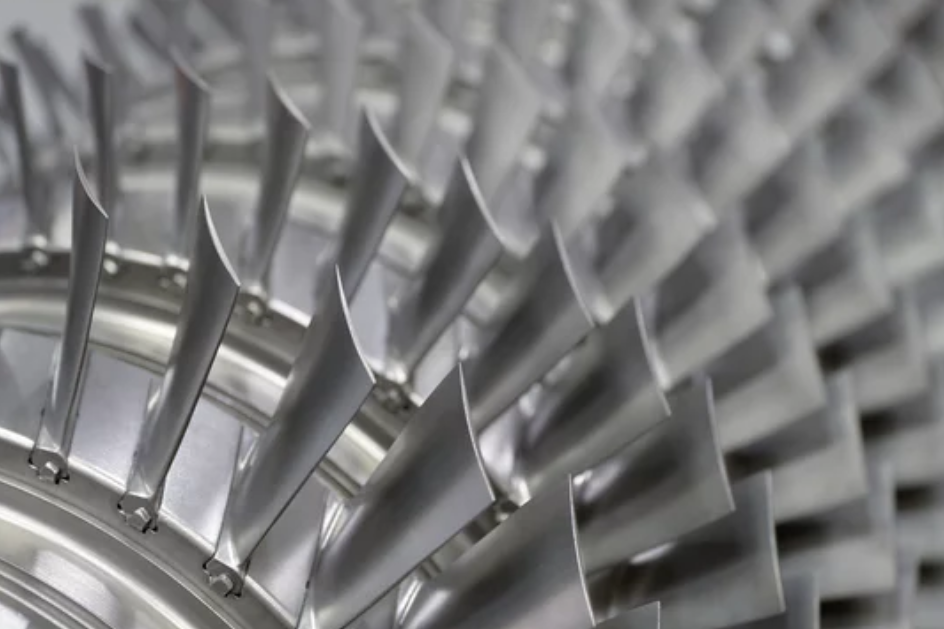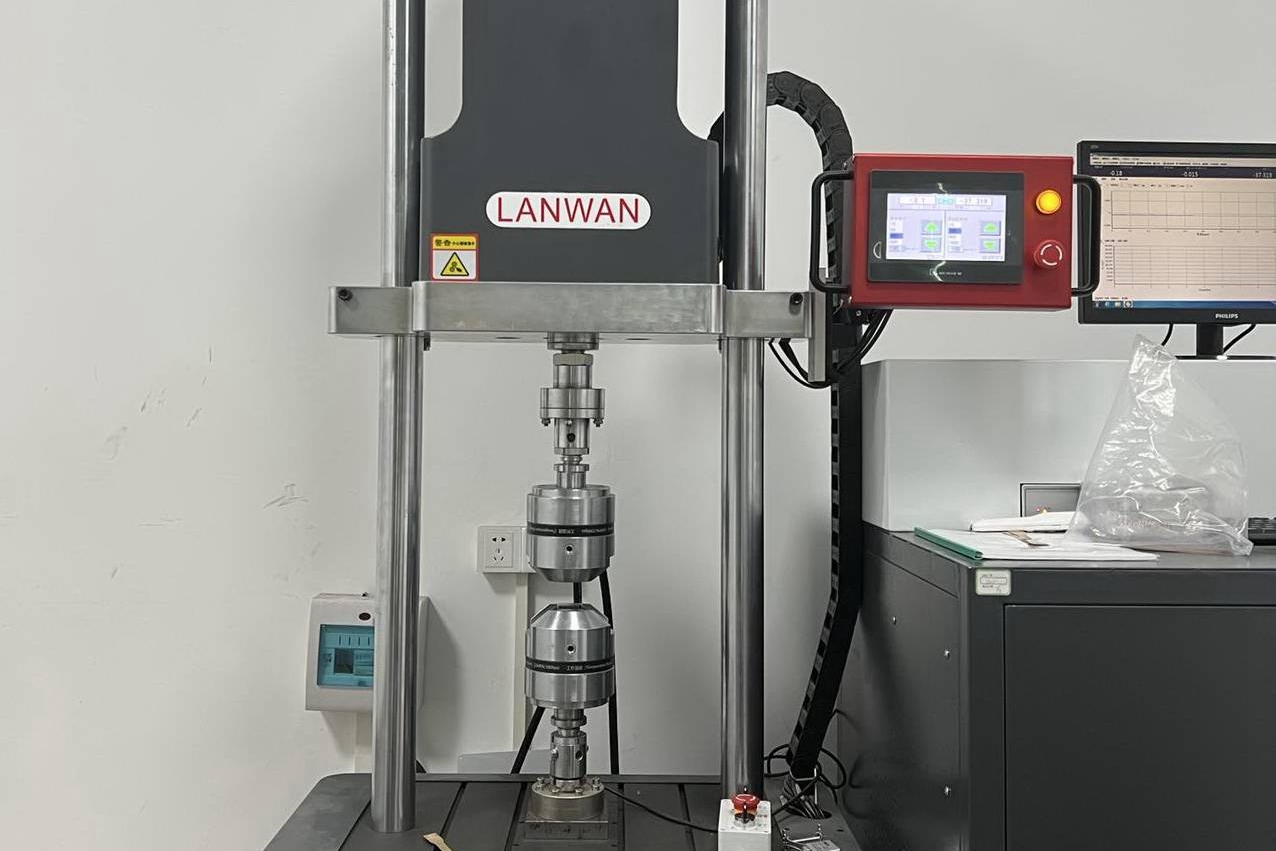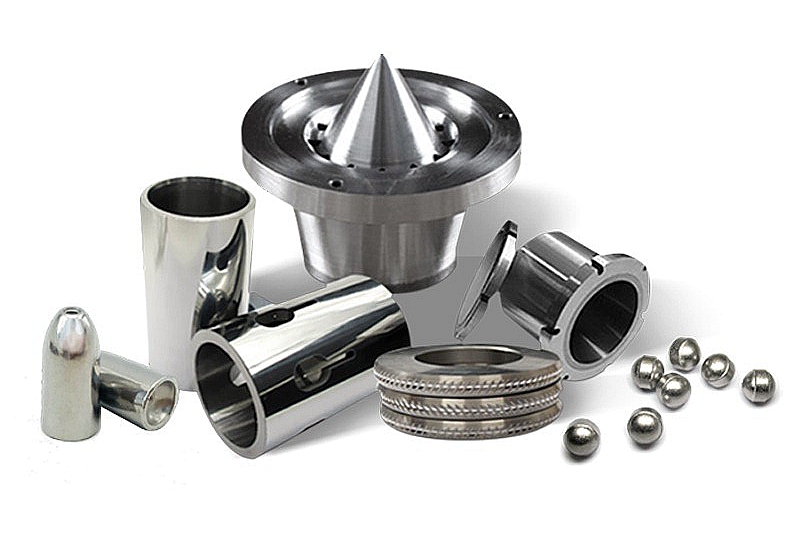Precision Structural Component Manufacturing for Aerospace
Introduction
Modern aerospace systems demand structural components that combine extreme precision, lightweight performance, and long-term durability. These parts must function reliably under high aerodynamic loads, thermal cycling, and dynamic vibration—all while maintaining minimal weight to optimize fuel efficiency and payload.
The demand for advanced engineering solutions has led to significant innovations in custom manufacturing, enabling the production of mission-specific parts tailored to tight tolerances and strict regulatory standards. Every component must be manufactured with precision and validated for aerospace deployment, from structural airframe elements to internal mechanical supports.
This blog explores the complete process of precision structural component manufacturing for aerospace, from materials selection and production technologies to validation, testing, and surface engineering. Each stage ensures the final components meet the industry's most exacting mechanical and environmental requirements.

Aerospace Structural Component Requirements
Aerospace structural components are designed to operate under exceptional mechanical and environmental conditions. These components are typically subjected to high axial and shear loads, thermal gradients from –55°C to 200°C, and prolonged exposure to vibration. Therefore, their design must account for fatigue life, static strength, stiffness-to-weight ratio, and dimensional stability.
The core mechanical specifications for structural parts in aircraft, satellites, and space vehicles often align with international standards such as MIL-HDBK-5, ASTM E8/E8M, and ISO 2680. Materials used in these components must meet the structural demands and compliance requirements for flammability, outgassing, and corrosion resistance.
Precision machining of aerospace parts typically requires tolerances tighter than ±0.01 mm, especially for load-bearing structures. Critical elements like fuselage bulkheads, wing spars, engine pylons, and seat track rails are subject to stringent design validation before qualification. To ensure compliance, these components must also undergo proof load testing, thermal cycling simulation, and vibration endurance.
Manufacturers rely on specialized aerospace solutions that integrate multi-axis CNC machining, EDM processing, and metrology systems to support such exacting requirements. Finite element analysis (FEA) is often employed in early design stages to simulate structural performance and optimize material distribution.
Furthermore, precision inspection techniques—such as CMM probing and laser scanning—are critical to verify geometric tolerances across complex assemblies. Aerospace standards like AS9100 mandate thorough documentation of inspection data, creating a traceable quality record for every vital part.
Together, these technical requirements ensure that aerospace structural components fulfill performance expectations and meet the rigorous certification criteria necessary for flight readiness.
Material Selection for Aerospace Structures
Common Aerospace Metals and Alloys
The material selection process in aerospace structural design focuses on achieving the highest possible strength-to-weight ratio while maintaining thermal and corrosion resistance. High-performance alloys such as titanium (Ti-6Al-4V), aluminum 7075-T6, and Inconel 718 are commonly employed due to their specific mechanical properties.
Titanium alloys offer a unique combination of low density (4.5 g/cm³) and high tensile strength (>900 MPa), making them ideal for load-bearing components near engine sections. Aluminum alloys, such as A356 and 7075, are widely used in airframe structures due to their lightweight, machinability, and cost-efficiency.
In structural castings, aluminum die casting is frequently used for control brackets, electronic enclosures, and bulkhead fittings. This process enables complex shapes with excellent dimensional stability and fatigue resistance, which is ideal for mid-to-high volume aerospace programs.
Material Processing Compatibility
Beyond mechanical attributes, aerospace material selection also considers downstream processing. Alloys must be compatible with precision machining, welding, and coating without compromising structural integrity.
For instance, titanium requires inert shielding during welding to prevent embrittlement. In contrast, aluminum requires anodization or chemical conversion coating to resist oxidation. Superalloys such as Inconel and Hastelloy demand tool path optimization and coolant control during machining due to work hardening characteristics.
Materials must remain dimensionally stable during thermal cycles and not exhibit phase transformation or delamination, especially in multi-material assemblies.
Lightweighting Strategy
Aerospace platforms are consistently weight-sensitive, and engineers employ several lightweighting approaches to reduce structural mass without sacrificing strength. These include topology optimization, lattice structures, and advanced materials such as carbon fiber-reinforced polymers (CFRP) and magnesium alloys.
Magnesium's density (1.8 g/cm³) makes it the lightest structural metal. Magnesium castings can yield up to 35% weight reduction compared to aluminum equivalents when used in non-critical structural elements like brackets and housings. However, they must be protected with surface treatments to avoid galvanic corrosion when assembled with dissimilar metals.
In many structural applications, sandwich panels combining aluminum skins with Nomex or aluminum honeycomb cores achieve excellent stiffness while minimizing weight. These panels are used in flooring systems, bulkheads, and payload doors.
By combining material science with aerospace-specific engineering practices, manufacturers can balance performance, manufacturability, and cost efficiency in structural component development.
Manufacturing Technologies in Precision Aerospace Parts
CNC Machining for Tight Tolerances
CNC machining is a cornerstone of aerospace structural component production due to its ability to achieve micron-level accuracy and repeatability. Five-axis machining platforms are particularly valuable in aerospace, allowing access to complex geometries and undercuts without multiple setups. Components such as wing ribs, bulkhead reinforcements, and satellite brackets are frequently machined from high-strength aluminum and titanium blocks.
Typical tolerance requirements are ±0.005 mm for critical fit features and ±0.01 mm for general profiles. High-speed spindles, thermal compensation systems, and in-process probing contribute to stable dimensional control, especially on thin-walled or high-aspect-ratio structures.
Prototyping with CNC machining is also used extensively in aerospace development programs for fast iteration cycles, form-fit-function validation, and tool path optimization before full-rate production.
Investment and Sand Casting for Complex Geometries
Complex aerospace structures—such as actuator housings, gearbox mounts, and cooling channel-integrated walls—often require casting to form intricate internal features that machining cannot economically achieve.
Investment casting supports aerospace-grade alloys like Inconel 713, A356 aluminum, and titanium, enabling near-net-shape components with wall thicknesses down to 1.5 mm and surface finishes as smooth as Ra 1.6 μm. The process is ideal for producing thin, hollow structures with integrated bosses and ribs, which are standard in spaceframe assemblies.
Sand casting offers cost-effective manufacturing with high metallurgical quality for large or less geometrically intricate structures. Aerospace applications include satellite baseplates, antenna support structures, and structural enclosures where weight-to-cost ratios must be optimized. Pattern making with 3D printing enables rapid tooling for sand cast prototypes and short-run production.
Sheet Metal and Forming Methods
Sheet metal forming techniques are widely used for aerospace panels, fairings, and brackets that require high strength, tight tolerances, and minimal weight. Typical processes include stamping, bending, hydroforming, and roll forming.
Hydroforming is especially effective for producing complex contoured parts from titanium and Inconel sheets with uniform material thickness. It avoids stress concentrations and spring back issues inherent in traditional stamping.
Precision metal bending ensures tight angular control and consistent edge alignment for bracketry and framing elements. With automatic angle measurement systems, CNC press brakes enable real-time correction, achieving bend tolerances within ±0.5°.
These forming techniques are often integrated with welding, riveting, or bonded assemblies to build modular, lightweight structural subassemblies used throughout the airframe.
Quality Control and Structural Validation
Non-Destructive Testing (NDT) Techniques
In aerospace structural manufacturing, non-destructive testing (NDT) is critical to ensure components' internal and surface integrity without compromising their usability. Techniques such as ultrasonic testing (UT), radiographic testing (RT), and dye penetrant inspection (DPI) are routinely applied throughout production.
Ultrasonic testing is preferred for detecting internal voids and inclusions in thick-section aluminum and titanium parts, particularly those produced via casting or forging. Radiographic testing, including digital X-ray and computed tomography (CT), allows volumetric inspection of complex castings and welded joints. DPI is widely used on machined surfaces to detect micro-cracks and surface porosity, especially in high-cycle fatigue components.
Compliance with aerospace NDT standards such as ASTM E1444 (magnetic particle), ASTM E1742 (radiography), and NAS 410 (qualification) ensures that each structural part meets airworthiness requirements.
Coordinate Measuring Machines (CMM)
For dimensional validation, coordinate measuring machines are essential for measuring geometric features, tolerances, and surface profiles with micron-level precision. This is particularly important for mating surfaces, critical hole alignments, and GD&T-defined features on primary load paths.
CMM inspection systems with scanning heads or multi-sensor probes enable contact and non-contact measurement modes. Aerospace OEMs typically require repeatability of ±2 µm and traceable calibration records.
In complex assemblies such as wing structures or landing gear linkages, CMM inspection is integrated into production workflows to verify in-process setups, final tolerances, and jig alignment before flight hardware certification.
Fatigue and Load Testing
Structural components are frequently exposed to fluctuating stress states and must be tested under simulated service conditions. Fatigue testing quantifies the number of cycles a component can withstand under defined stress amplitudes, while static load testing validates yield margins and deformation limits.
Dynamic fatigue testers replicate engine vibration, thermal shock, and fuselage pressurization cycles to ensure long-term structural reliability. Typical aerospace fatigue programs follow MIL-STD-1530 or FAA FAR 25.571 guidelines for safe-life or fail-safe design methodologies.
Fatigue validation is conducted using servo-hydraulic test benches, environmental chambers, and digital strain measurement systems to simulate operational duty cycles. Components failing below design thresholds are subjected to root cause analysis and design modification.
These quality control procedures build traceability and repeatability into aerospace manufacturing workflows, ensuring that only structurally sound, certified components reach the final assembly line.
Surface Engineering and Protection
Surface Treatments for Corrosion and Wear
Aerospace structural components often operate in aggressive environments, where exposure to moisture, temperature extremes, and chemical agents can degrade surface integrity. Surface treatments enhance corrosion resistance, reduce friction, and extend part life, especially in load-bearing assemblies and external structures.
Anodizing is one of the most widely used methods, particularly for aluminum alloys. Anodizing forms a hard, uniform oxide layer that increases surface hardness (up to 500 HV) and improves resistance to pitting and abrasion. It is frequently applied to fuselage panels, antenna housings, and equipment enclosures.
Other surface treatment technologies include chemical conversion coatings for conductivity retention, electroless nickel plating for corrosion, and wear protection on steel components. In multimetal assemblies, these coatings help mitigate galvanic corrosion and ensure electrical continuity across mating surfaces.
For critical rotating or sliding structures, titanium nitride (TiN) and chromium-based coatings lower surface friction and reduce fretting damage under vibration. Depending on substrate compatibility and component geometry, these are applied using PVD or CVD processes.
Heat Treatment Applications
Heat treatment is another vital process to enhance material performance through phase transformation, grain refinement, and residual stress relief. Structural components made from aluminum 7075-T6, Ti-6Al-4V, and maraging steels benefit significantly from controlled thermal cycles, which improve fatigue strength and dimensional stability.
The effectiveness of thermal processing is highly dependent on time-temperature profiles and quench rates. For example, aging aluminum alloys can increase tensile strength by up to 25%, while solution treatment of nickel-based superalloys improves creep resistance for extended high-temperature service.
In aerospace part manufacturing, thermal processing is typically conducted in vacuum or inert gas furnaces to prevent oxidation and ensure surface purity. Tight control over furnace calibration and soak times ensures repeatable results and compliance with AMS and NADCAP heat treatment standards.
Heat treatment is especially critical for cast and formed parts, which may contain internal stresses from solidification or deformation. Post-process stress relief cycles ensure the dimensional stability required for subsequent machining, inspection, and assembly.
Using protective coatings, heat-treated aerospace components maintain long-term reliability under harsh mechanical and environmental loads.
Case Study: Lightweight CNC Milled Titanium Bracket
In this case study, we examine a structural titanium bracket used in the turbine assembly of a next-generation commercial aircraft. The component supports dynamic loads transmitted from the high-pressure compressor housing while minimizing weight and maintaining thermal stability.
The design was optimized using topology optimization software, resulting in a highly efficient organic geometry that reduced unnecessary material while preserving stiffness. The bracket was machined from a solid billet of Ti-6Al-4V using five-axis CNC machining, with tight tolerances of ±0.01 mm and wall thicknesses down to 1.2 mm. Due to the high strength-to-weight ratio of titanium, the final part weighed only 220 grams while supporting loads up to 12 kN.
Post-machining, the bracket underwent stress relief heat treatment to eliminate internal machining-induced stresses, followed by surface passivation to enhance corrosion resistance. Fatigue testing confirmed the part's capability to endure over 10⁶ cycles under variable amplitude loading, replicating real-world turbine startup and shutdown sequences.
Dimensional conformity was validated through multi-axis CMM inspection, ensuring all GD&T features aligned with CAD specifications. The surface roughness was measured at Ra 0.8 µm, suitable for direct installation without further finishing.
What makes this application notable is the integration of simulation-driven design, precision CNC execution, and post-process validation into a seamless workflow. The choice of titanium alloy reduced mass and offered high temperature and corrosion resistance, meeting the harsh demands of engine environments.
The success of this titanium bracket highlights how precision structural manufacturing enables aerospace platforms to achieve performance and efficiency targets. This part exemplifies the future of flight-ready component engineering by using material optimization, digital inspection, and advanced finishing processes.
Conclusion
Precision structural component manufacturing for aerospace requires converging high-performance materials, advanced production technologies, and rigorous quality assurance. From titanium and aluminum alloys to complex casting and forming processes, every stage of the component lifecycle must be engineered to deliver maximum reliability under extreme operational conditions.
As aerospace platforms evolve toward higher efficiency, longer missions, and reduced environmental impact, the importance of structural integrity and weight optimization continues to grow. Manufacturers must, therefore, rely on validated technologies—from CNC machining and investment casting to advanced heat treatment and surface engineering—to ensure that parts meet specifications and consistently outperform in service.
Integrating simulation, real-time inspection, and fatigue validation ensures traceability and repeatability across every critical aerospace component. By maintaining this level of precision throughout the design-to-production pipeline, engineers can confidently deliver structural parts that meet the demands of modern aerospace systems—both commercial and defense.



